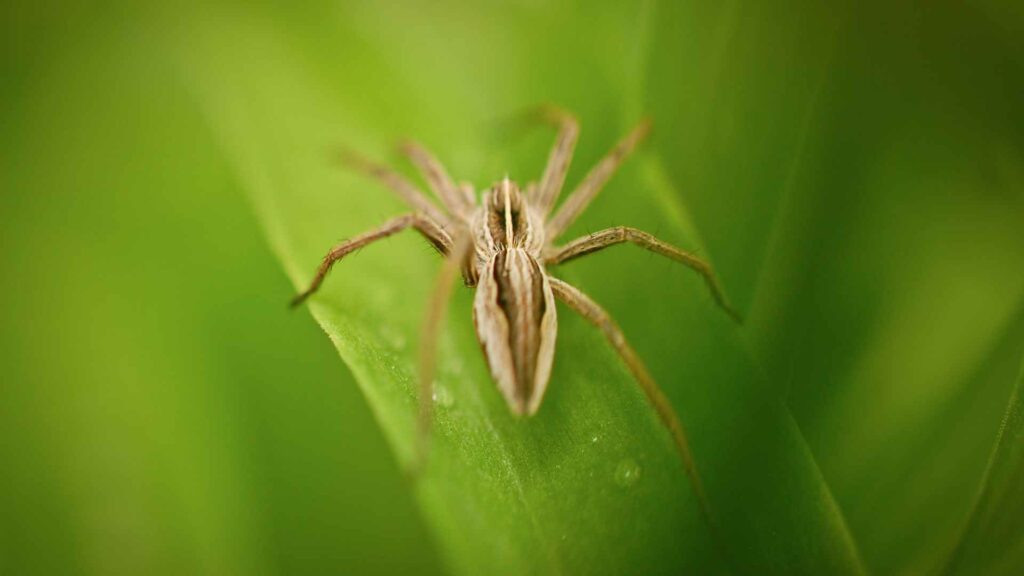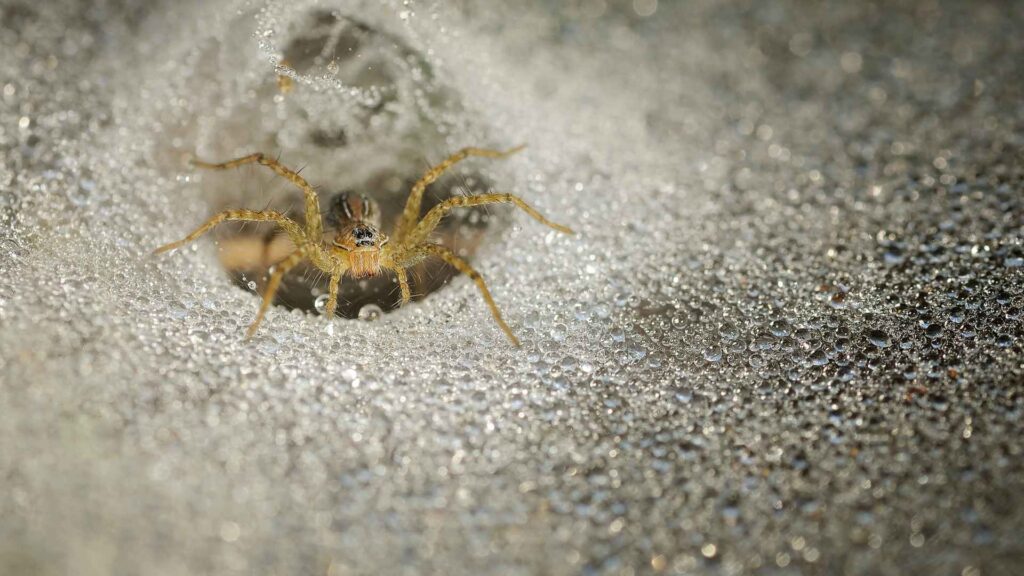Table Of Content
ToggleAs a pest control expert, I frequently encounter homeowners struggling with grass spiders. These funnel-web weavers can be unsettling, especially when they take up residence near our homes. But fear not! This guide will equip you with the knowledge and strategies to effectively eliminate and prevent grass spider infestations.
While spotting the telltale funnel webs is a surefire sign of grass spiders, there’s more to identifying an infestation than just a sticky surprise. Here’s a breakdown of key indicators to help you determine if you’re sharing your yard with these eight-legged residents:
By keeping an eye out for these signs, you can effectively identify a grass spider infestation and take the necessary steps to control their population.

Before resorting to chemicals, consider these effective non-chemical methods for removing grass spiders from your yard. These methods are ideal if you’re squeamish about close encounters with spiders or if you prefer a more environmentally friendly approach to pest control.
Looking to remove grass spiders humanely? This catch-and-release method allows you to safely relocate them without harming a single spider. Here’s what you’ll need:
Gather your supplies:
The Capture:
The Release:
Remember: Respectful relocation keeps your home spider-free and gives these beneficial creatures a second chance.
This is a quick and easy way to remove webs and spiders, especially for those uncomfortable with close encounters. Here are some tips for effective spider removal with a vacuum:
Strategic placement of glue traps can help capture spiders wandering in search of prey. However, these traps can be messy and indiscriminately trap other beneficial insects as well. Here’s how to use them effectively:
Turn Your Yard Spider-Free: Call Us for Expert Assistance!

If non-chemical methods prove insufficient for a significant grass spider infestation, targeted insecticides can be a solution. However, it’s important to prioritize safety and environmental responsibility when using these products.
Insecticides can be effective in eliminating grass spiders, but it’s crucial to choose the right product and apply it correctly. Here’s what to keep in mind:
These products are formulated to be particularly effective against spiders while being less harmful to beneficial insects like ladybugs and bees. Look for ingredients like bifenthrin or deltamethrin, which are commonly used in spider-specific insecticides.
Important Considerations:
Say No to Spiders: Let Our Professionals Handle Them!

While DIY methods can be effective for managing small grass spider populations, there are situations where seeking professional help from a licensed pest control company is the best course of action. Here’s when calling in the experts might be the smartest move:
Keep Spiders at Bay: Our Team is Ready to Help!
The key to long-term success lies in prevention:

As a pest control expert, I understand the frustration of dealing with grass spiders. By implementing the strategies outlined above, you can effectively eliminate existing infestations and prevent future problems.
Remember, consistent maintenance is key. By being proactive in your spider management efforts, you can create a pest-free environment for yourself and your family.
Grass spiders are commonly found in outdoor areas with dense vegetation, such as gardens, lawns, and bushes, due to their preference for these environments. They are attracted to areas abundant in insects, their primary food source, which can explain their presence in areas with thriving insect populations. Additionally, the presence of hiding spots like tall grass or piles of leaves provides ideal habitats for grass spiders to build their webs and establish their colonies.
While grass spiders are beneficial as they prey on insects, their presence indoors can be unsettling for some people. Whether to kill a grass spider or not depends on personal preferences and the level of infestation. If their numbers are manageable and they are not causing harm, it may be more humane to relocate them outdoors rather than killing them. However, if their presence poses a significant nuisance or safety concern, especially for those with arachnophobia or allergies to spider bites, professional pest control intervention may be necessary.
Grass spiders are primarily attracted to areas with abundant insect populations, as insects serve as their main food source. They are also drawn to environments with dense vegetation, tall grass, shrubs, and gardens, which provide ample hiding spots for them to build their webs and hunt for prey. Additionally, outdoor lighting can attract insects, subsequently attracting grass spiders that feed on these insects.
Grass spiders can enter homes through openings such as gaps in windows and doors, cracks in walls, vents, and utility entry points. They may also hitchhike indoors on items brought in from outside, such as firewood, potted plants, or outdoor furniture. Additionally, if there are openings in the foundation or gaps around pipes and cables, grass spiders can find their way inside seeking shelter or following prey that has entered the house. Regularly sealing entry points and maintaining a tidy indoor environment can help prevent grass spiders from entering your home.
Your trusted pest control experts in Southern California. Keeping your neighborhood pest-free!